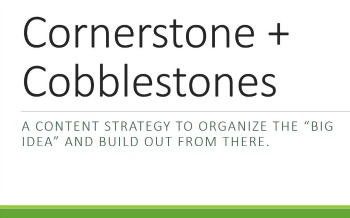Sometime last year I heard a radio show host discussing metrics in a fragmented media market. To access his show, you could listen live on radio, watch simulcast on TV, download two different streaming apps, and download the podcast to listen later. Just measuring the “radio audience” wasn’t cutting it anymore.
Ryen Russillo works for ESPN. ESPN is a media company that has excelled at understanding its audience and what it wants–when, where, and in what format.
You have to be screen agnostic.

What ESPN figured out early is that you have to be device agnostic. Whether I’m in my car, on my couch, or surfing the Web on a desktop, tablet, or smartphone, ESPN wants to make it easy for me to interact with its content.
Screen agnostic doesn’t mean content agnostic.

I’ve written before about being screen agnostic. I’ve honed in on meeting your audience where it is. And I’ve talked, of course, about creating content that resonates with your audience.
This doesn’t mean your brilliant Web content will get traction on Facebook or your YouTube video will be a hit on Twitter. What goes where matters.
The Atlantic has a must-read article on how ESPN is building different content for different platforms and thinking through what it means to be a media company in a post-cable-network world. The article covers formats (e.g., SMS, Web, TV) and channels (e.g., Twitter, Facebook, Snapchat). It talks about how ESPN is trying to own the smartphone lockscreen (aka, “arguably the most valuable real estate in the media world”).
For example, Derek Thompson writes:
ESPN is impressively agnostic about where to put its best stuff, sharing ad-free video clips on Snapchat; tweeting its long feature pieces days before the magazine slips into mail boxes; and making an infinity of videos, podcasts, articles, and other forms of content free on its Web site and in other forms.
Thompson also notes that “ESPN is confronting the slow unbundling of television by unbundling itself—treating its own site, plus Facebook, Twitter, Snapchat, and phone alerts, as separate channels, each with [its] own appropriate programming and tone.”
You can’t replicate ESPN.
What works for ESPN won’t work for you. It’s not supposed to.
This isn’t one-size-fits-all stuff.
Done right, your content strategy will fit your audience.
Read this article because ESPN is doing it right for ESPN. It’s asking the kind of smart questions your business should be asking too. More important, ESPN isn’t waiting to react to content trends. It’s trying to anticipate them. Are you?
Feature photo by BlogWoodford; Screen by Theilr; Humans by Eva Rinaldi (Flickr).



